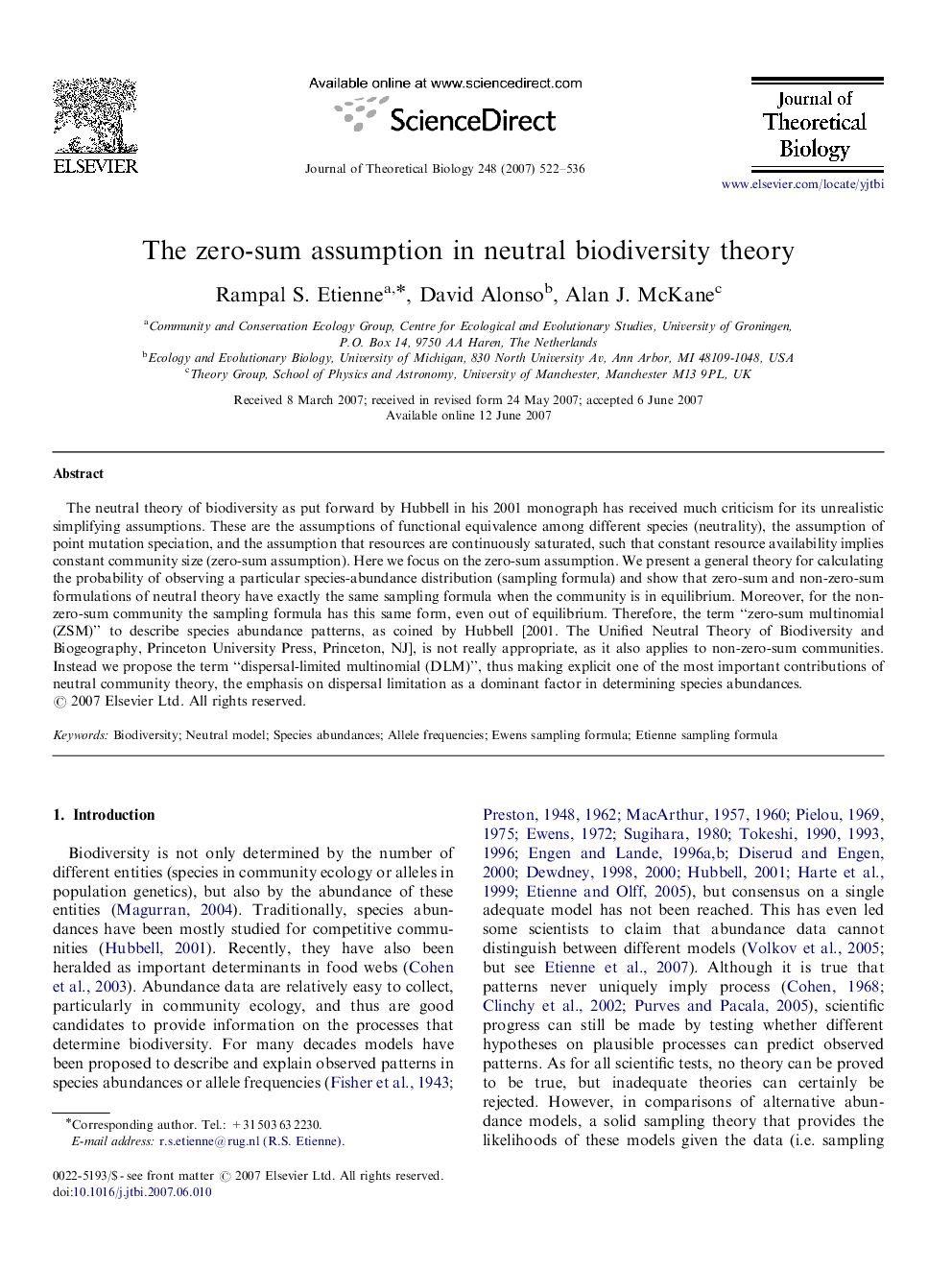| Article ID | Journal | Published Year | Pages | File Type |
|---|---|---|---|---|
| 4498924 | Journal of Theoretical Biology | 2007 | 15 Pages |
The neutral theory of biodiversity as put forward by Hubbell in his 2001 monograph has received much criticism for its unrealistic simplifying assumptions. These are the assumptions of functional equivalence among different species (neutrality), the assumption of point mutation speciation, and the assumption that resources are continuously saturated, such that constant resource availability implies constant community size (zero-sum assumption). Here we focus on the zero-sum assumption. We present a general theory for calculating the probability of observing a particular species-abundance distribution (sampling formula) and show that zero-sum and non-zero-sum formulations of neutral theory have exactly the same sampling formula when the community is in equilibrium. Moreover, for the non-zero-sum community the sampling formula has this same form, even out of equilibrium. Therefore, the term “zero-sum multinomial (ZSM)” to describe species abundance patterns, as coined by Hubbell [2001. The Unified Neutral Theory of Biodiversity and Biogeography, Princeton University Press, Princeton, NJ], is not really appropriate, as it also applies to non-zero-sum communities. Instead we propose the term “dispersal-limited multinomial (DLM)”, thus making explicit one of the most important contributions of neutral community theory, the emphasis on dispersal limitation as a dominant factor in determining species abundances.
